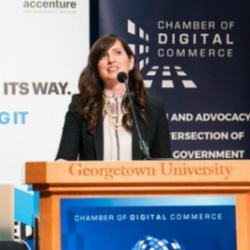The Illinois Blockchain Initiative has announced its intention to create a secure, ‘self-sovereign’ identity for Illinois citizens during the birth registration process. In partnership with Evernym, an identity solutions provider, it will use leveraging distributed ledger technology to provide secure digital identity solutions. The concept will augment work from the W3C’s Verifiable Claims Task Force and use the Sovrin Foundation’s distributed identity ledger.
Jennifer O’Rourke, Blockchain Business Liaison for the Illinois Blockchain Initiative commented, “To structurally address the many issues surrounding digital identity, we felt it was important to develop a framework that examines identity from its inception at child birth. Government has an important role to play in the development of any digital identity ecosystem. Identity is not only foundational to nearly every government service, but is the basis for trust and legitimacy in the public sector.”

Birth background
‘Self-sovereign identity’ refers to a digital identity which remains entirely under the individual’s control. A value in a ‘self-sovereign identity’ comes when it can be efficiently and securely validated by entities who require it, free from reliance on a centralized repository.
In the proposed framework, government agencies will verify birth registration information. They will then:
- cryptographically sign identity attributes – such as legal name, date of birth, sex, blood type, etc
- create what Evernym calls ‘verifiable claims’ or attributes.
Permission to view or share each of these government-verified claims is stored on the tamper-proof distributed ledger in the form of a decentralized identifier. The identifier guarantees each attribute is cryptographically sealed and only accessible with explicit consent of the identity holder (or, in the case of a newborn child, his or her legal guardian).
Enterprise implications
For enterprises, and smaller Businesses and governments, the attraction is they will be able to verify and authenticate citizens by requesting encrypted access to these ‘verifiable claims’. Such access will minimise the need for entities to establish, maintain and rely on their own proprietary databases of identity information.
Cab Morris of the Illinois Blockchain Initiative said: “This architecture allows us to bridge the best of both worlds, combining government’s robust infrastructure for identity verification with a platform engineered for the digital identity ecosystem. This digital identity system is extensible, inter-operable and at the same time ensures the utmost security, privacy and user-agency. Additionally, this model for digital identity can extend beyond the boundaries of government and has broad applicability for many products and services in the private sector.”
According to Evernym’s Drummond Reed: “The successful transition to an identity ecosystem that is truly self-sovereign requires conversion of ‘breeder documents’, such as birth certificates, which serve as the basis for obtaining other documents. Digitizing these foundational documents in a state the size and importance of Illinois will make a major contribution to the larger effort of solving the online identity problem.”
Evernym and Sovrin
Distributed Ledger Technology (DLT, or blockchain technology) has the potential to remove reliance on conventional, centralized system silos. It is this capability, to Evernym, which enables self-sovereignty. Yet, if implemented in a proprietary manner, DLT is similar to a traditional database. This means one entity retains pull-the-plug and change-the-rules authority. In effect such a model retains the fundamental problems of siloed identity. Arguably this is what the identity mess is in the first place.
Evernym’s Sovrin claims to be is the world’s only global public utility for trusted, self-sovereign identity. Like the Internet, no one owns this; everyone can use it and anyone can improve it.
At Sovrin’s core is a ledger with an identity purpose. Any person, organization or ‘thing’ will his/her/its own digital identity. This will be more than control it and it will be independent of traditional silos. In parallel, any person or ‘thing’ can instantly verify the authenticity of ‘claims’. These will include who (or what something) one claims to be. This occurs with complete control of how, what and when information one share information. It reduces, even eliminates, added risks of correlation and without creating troves of breachable data.
Sovrin utilizes Hyperledger Indy. This is an open source blockchain framework, one of the Hyperledger projects which The Linux Foundation hosts. (Evernym originally contributed source code to Hyperledger Indy.)
What does it mean
Your bureaucratic identity ‘appears’ sometime after your birth. Coming into this world is biologically complex and administratively a nightmare. Yet much depends, even in childhood, on correct identification.
In adulthood the importance grows. Employers, insurance companies, finance houses, government (local and central) and much more need to know who you are. Furthermore, people should not limit ‘applicability’. Companies and partnerships and many other ‘artificial’ entities exist: these also need confirmable identification.
Though not yet joined-up, this is as close to a cradle-to-grave solution that you might imagine. The element puzzling ET is: what happens not on birth but on death? Once dead it is tricky to authorise access to confirm your demise.


























